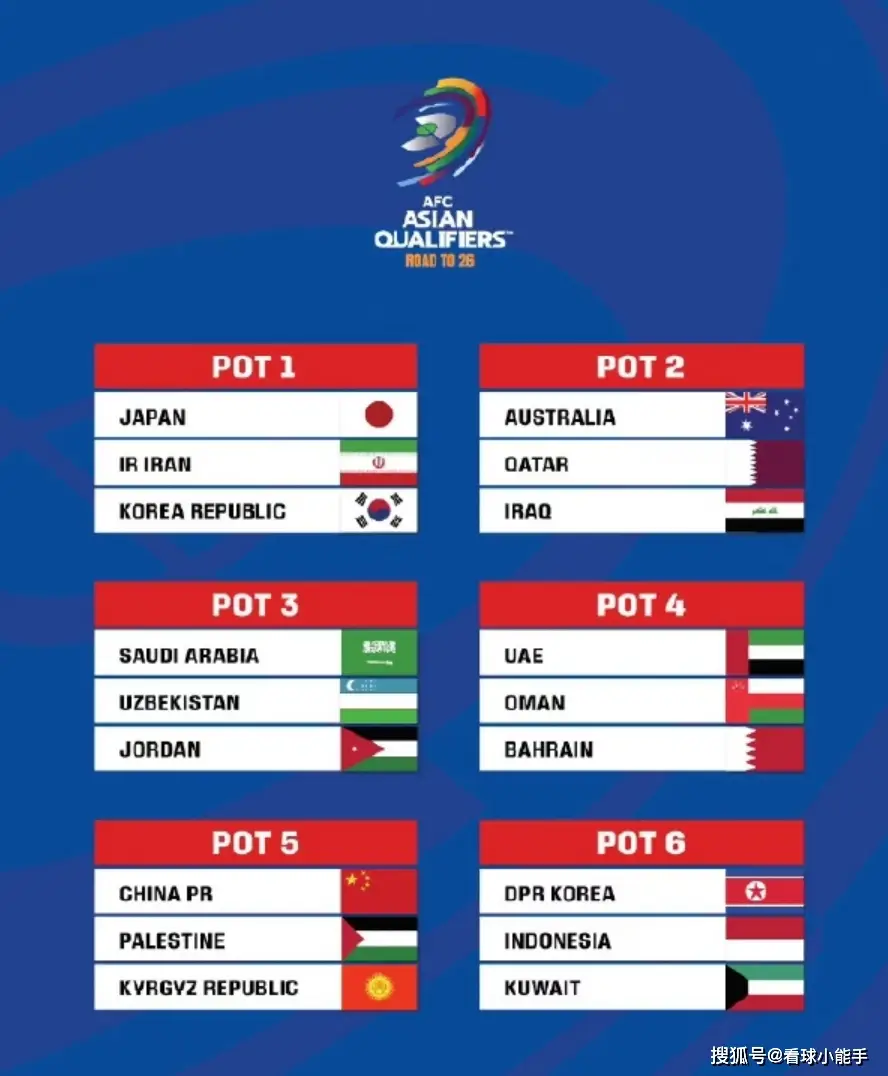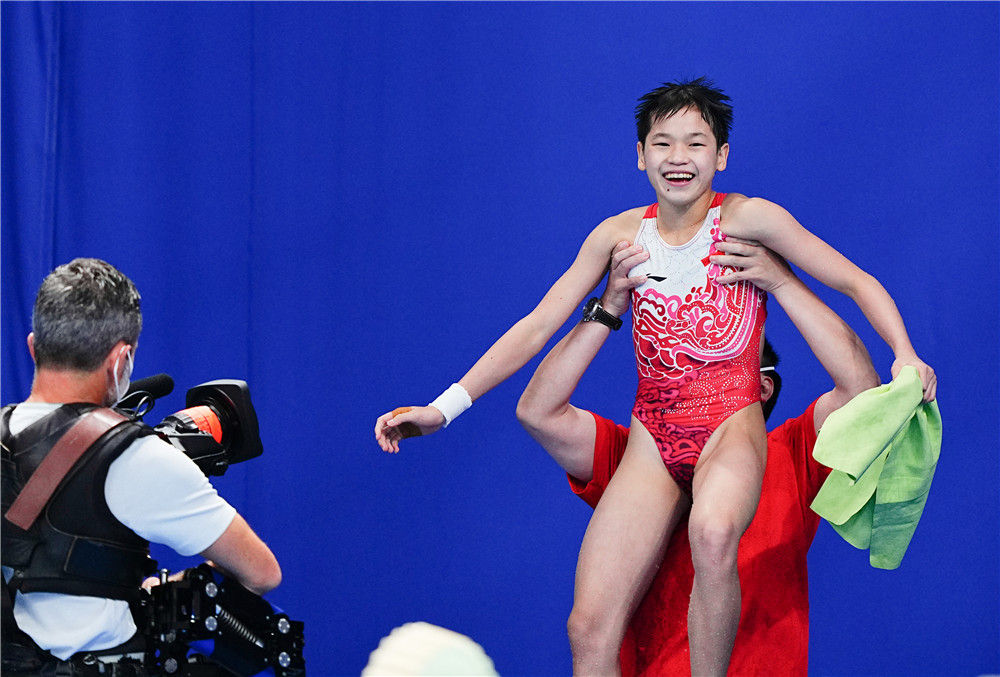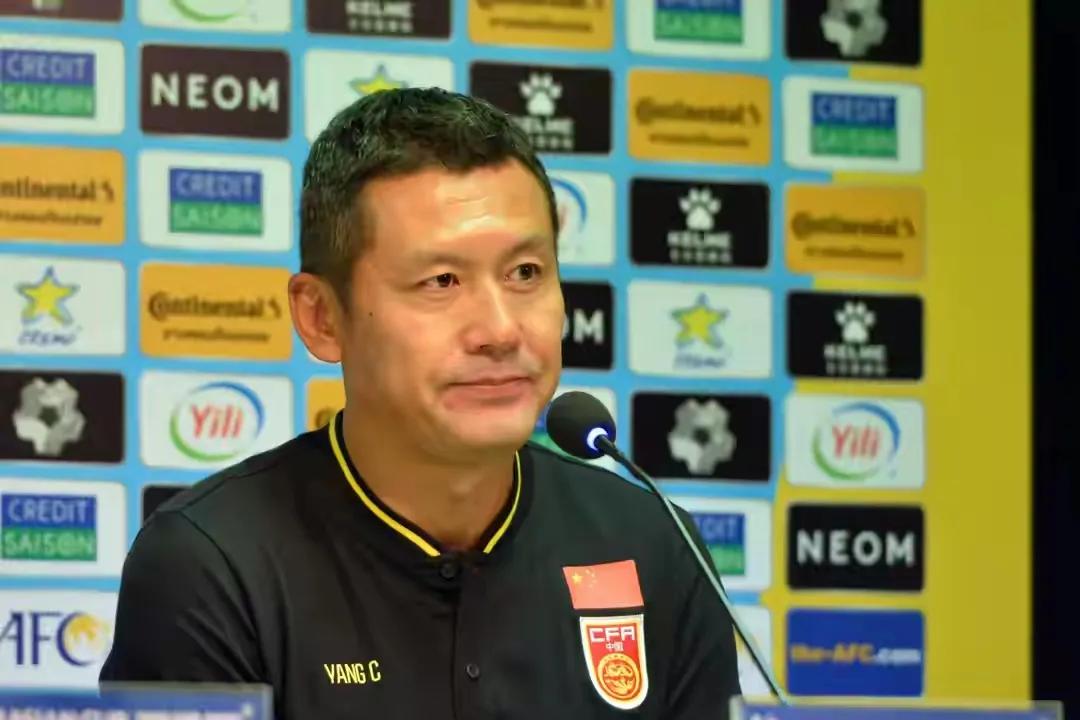在足球脚步的外部插入的教学计划
1。摘要
课程目标:本课程的目的是使学生能够掌握在足球脚步的外部进行插头的基本动作,提高他们的运球能力,并提高足球的实践技能。
教学内容:本课程将介绍在脚步外部运球的基本概念,技术要点,行动步骤和预防措施。通过理论解释和演示的结合,学生可以掌握正确的运球姿势和技能。
教学方法:本课程将采用解释,演示,实践和反馈的教学方法。通过教师的解释和演示,学生可以掌握基本运动。通过小组实践和互动讨论,学生可以练习和巩固他们所学到的技能;通过反馈和评估,学生可以理解自己的缺点并改善它们。
教学对象:本课程适合各个年龄段的足球爱好者,尤其是初学者。通过对本课程的研究,学生将能够提高足球技能并更好地参加足球。
课程持续时间:预计该课程将持续XX上课时间,并且特定时间将根据学校或教练的安排进行调整。
“在足球脚步的外侧进行鼓的学习计划”旨在使学生能够掌握足球外面在足球外面鼓声的基本技能,并提高学生的实用足球战斗能力。该课程将采用各种教学方法,重点关注理论和实践的结合,以帮助学生更好地掌握和运用这一技能。
2。学生热身准备
在班上开始之前,足够的热身准备对于确保学生在足球脚步的外部进行盘盘运动中可以安全有效地进行活动至关重要。首先组织学生慢跑并在法庭上跑一两圈,以增加学生的心率并为下一次活动做准备。然后进行一些基本的热身运动,例如关节运动和肌肉拉伸,这有助于增加关节柔韧性和肌肉弹性。请特别注意指导学生的脚步,例如脚踝旋转,脚趾握和放松,并为下一个足球练习做准备。此外,提醒学生们注意热身过程中运动的范围和力量,以避免发生运动伤害。通过热身准备课程,学生不仅可以逐渐进入运动状态,还可以激发学生对足球的兴趣,为随后在足球脚步外的盘盘练习奠定了良好的基础。
3。理论知识的解释
插在脚步外面的概念和重要性:在脚步的外部运球是足球的重要技术行动。它是通过使用脚步的外部触摸球来控制和移动球。它在游戏中具有广泛的应用程序,是玩家突破防守,调整节奏,传球并射击的重要手段。
正确的姿势和移动尖端,用于插在脚步的外部:首先,玩家需要保持身体的平衡,面对进步的方向,并稍微弯曲膝盖。抬起运球的脚,并用脚踏的外部触摸球的底部。在运球过程中,请注意使用脚踝的强度控制球的速度和方向。同时,需要平衡另一只脚以为身体提供支撑。
运球过程中的技巧和要点:玩家需要掌握如何控制球和脚之间的距离,以及如何利用脚踝的强度来调节球的方向。此外,您需要学习在运球期间观察现场的情况,了解队友和对手的位置,以便及时做出反应。当面对防守时,玩家可以利用脚步的外部改变方向并突破以突破对手的防守线。
常见的错误动作和校正方法:在脚步外部的盘盘过程中,常见的错误动作包括用脚趾或脚底部接触球,从而导致对球方向的不稳定控制。为了纠正这些错误,玩家应该更多地练习,关注脚的位置以及如何触球。此外,您还可以通过观看教学视频和咨询教练或专业人士来了解正确的运动。
在实际战斗中插在脚步的外部上的运球:在游戏中,插在脚步的外部可以用于快速突破,调整节奏,传球和拍摄等场景。玩家需要根据场上的情况灵活地应用这项技术,以为球队创造更多的进攻机会。
1。在脚部外部运球的基本原理和技术简介
在脚步的外部运球是足球的重要技术。它的基本原则是通过脚步的外部与足球联系,并控制力量和方向,以便足球沿特定的路线移动。这项技术不仅可以帮助玩家在行进过程中控制球的方向,而且在进攻和防守中都起着重要作用。通过掌握脚步外部的运球,玩家可以更好地控制游戏的节奏和情况。
准备姿势:保持身体平衡,并确保脚处于正确的位置。运球时,支撑脚应位于球的侧面,并保持与球的适当距离。
联系球:使用脚步外部的敏感区域接触球,并通过调整球的强度和位置来控制球的方向和速度。
强度和方向控制:使用适当的力沿预期的路线驱动球。同时,通过调整脚和身体角度的方向,改变球的方向。
练习方法:通过简单的练习方法,例如直线运球,弯曲的运球,变化的方向等等等,逐渐掌握了在脚部外部运球的技能。

在实际的教学中,教师应逐步指导学生根据学生的实际情况在脚步的外部掌握插头的基本原理和技巧,并结合演示和解释。通过持续的练习和实践应用,学生可以逐步提高自己在脚步外面的插头的技术水平,从而为随后的足球技能学习奠定了坚实的基础。
2。在足球比赛中插在脚步外面的插头的实际应用方案分析
在足球比赛中,在脚步的外部运球是一项非常重要的技术,可在实际战斗中广泛使用。在脚步的外部运球不仅可以帮助球员突破防守线,而且在传球,控制和射击方面也有广泛的应用。
首先,当突破防御线时,插在脚步的外部上的运球可以用作有效的进攻方法。当对手的防守紧张时,球员可以通过将球插入脚步的外部来迅速改变方向,以使后卫混淆并找到突破。此外,当玩家需要在狭窄的空间中移动时,在脚步的外部运球也可以发挥其独特的优势。
其次,脚步外部的运球在通过过程中还具有重要的应用。通过脚步的外部的精确运球,玩家可以在传球时控制球的路线和速度,从而使传球更加准确和快速。这对于快速通过并创造进攻机会至关重要。
同样,在控制球的外部,插在脚步的外部可以帮助球员在面对对手的高压防守时保持对球的控制。有了灵活的步法,球员可以有效地保护球并找到反击的机会。
在射击会议上,插在脚步的外部也可能会派上用场。玩家可以使用脚步的外部来调整射击角度和强度,以提高拍摄的准确性。尤其是当目标很远时,这种运球技术可以帮助玩家更好地控制射击的效果。
在脚步外面的运球在足球比赛中具有广泛的应用价值。在课堂教学中,教师应专注于培养学生在脚步外面运球,并让学生通过实践模拟在竞争中掌握其特定应用,从而提高学生的足球技能水平。
3。足球运球基本规则的描述
在进入足球脚步外部的盘盘技术的特定教学之前,我们首先需要了解运球的基本规则。这些规则不仅为运动员在比赛中的行动提供了指导,而且是足球运动中必不可少的基本理论知识。
在足球比赛的过程中,运动员需要遵循某些基本规则,以确保比赛的公平性和平稳进步。这些规则包括但不限于以下内容:
法院的规则:足球法庭通常是矩形,具有一定的长度和宽度和清晰的边界线。在运球期间,运动员必须留在规定的野外区域内。
球员位置和职责:在足球比赛中,球员分为守门员和现场球员。守门员主要负责捍卫目标,而球场上的球员则根据其位置负责进攻和防御任务。不同的职位具有不同的责任和战术要求。
足球的基本原理:盘盘时,必须保持球的运动,并且不会发生任何违规行为,例如阻止对手,越位等。在传球和射击时也遵循特定的规则。
时间管理:游戏分为两半,每个半部分都有一定的时间限制。同时,根据游戏的性质和规则,可能会有特殊情况,例如加班或罚球果断胜利。
犯规和处罚:任何违反规则的行为都将在比赛中被判断为犯规。根据犯规的严重性,将有不同的惩罚方法,例如警告,任意球或直接解雇。
在脚步的外部运球是足球中常见的运球技术。它在实际战斗中的应用需要遵循上述基本规则。例如,在运球期间,运动员必须确保他们不会越位,阻止对手的视线,并且不会侵犯对手的空间。了解这些规则与运球技能之间的关系对于提高运动员的技术水平和比赛能力至关重要。
4。基本技术教学
向学生详细说明插在脚步外面的技术运动,包括踢球的位置,角度,力量和身体协调。强调的是,身体在运球过程中保持平衡,与脚踏的外部接触球,并通过调节脚的力和角度来控制球的方向。
教师或专业教练进行标准的辅助运球示范,以证明完整的运动流程。通过慢动作,特写镜头和其他形式,学生可以清楚地观察并理解技术运动的关键联系。
将技术行动分解为多个步骤,并根据步骤进行教学。首先,进行基本运动训练,例如正确的跑步姿势,脚部准备运动等。然后逐渐过渡以完成脚步外部的盘盘技术,包括盘滴力,方向控制等。
组织学生进行实践练习,教师或教练在学生练习期间进行检查和指导,并及时纠正运动错误。设置不同难度级别的练习场景,以使学生能够在各种情况下逐渐掌握在脚步上的横向运球技术的使用。
鼓励学生观察,交流经验并进行互动教学。教师或教练根据他们的表现,表彰表现出色的表现以及指出需要改进的领域提供反馈。通过互动和反馈,提高学生的学习热情和技术水平。

提醒学生在练习过程中注意安全,并避免受伤。强调技术行动的标准化和准确性,以避免由错误的行动造成的潜在风险。
1。演示基本的姿势和跑步方法,用于在足球的脚部外面运球
理论说明:首先,我们将介绍在足球脚步的外部运球的基本概念,包括其应用方案和功能。学生需要了解和掌握他们的核心概念和基本要求。比赛过程中脚步的外侧滴落可以帮助玩家灵活,快速地通过不断变化的方向控制防守区域。此外,该技术还可以提高玩家的技术水平,并为后续的进攻和防守奠定基础。
基本位置演示:接下来,我们将在脚步外面展示盘盘的基本姿势。学生需要站稳脚跟并保持平衡,并保持脚部宽度。重心稍微向前倾斜,他的眼睛向前凝视,他保持警惕。运球脚的脚趾正朝向球,脚步的外部准备接触球。同时,非滴管脚的底部被接触到地面以保持身体平衡。此外,我们还强调学生注意自己的安全,并在运动过程中避免受伤。
运行方法演示:跑步和运球是紧密组合的。我们将展示如何在跑步过程中使用横向式式运球技术,并且在跑步时保持身体平衡和节奏至关重要。学生需要学习如何调整运动过程中运球脚的速度和频率,以确保球始终保持在控制范围内。此外,我们将教导如何通过更改运球脚的方向来调整运球脚的方向,这是脚部外部运球技术的重要组成部分。
学生实践:在理论解释和演示完成后,我们将安排学生进行实际操作。学生将在老师的指导下练习,并逐步掌握在脚步外面插入的技术要点。实际的部分将是教室的重要组成部分。我们将密切监视学生的练习过程,及时纠正他们的错误运动和技能,并确保他们正确地掌握了在脚步外部的盘盘技术。同时,我们还将鼓励学生互相学习,交流经验,并共同提高他们的技术水平。
2。学生分组和教练指导
这次会议是学生练习技能的关键时刻。通过小组练习,学生不仅可以提高他们的协作能力,而且还可以使学生通过相互学习和竞争更好地掌握在足球内部插入的技能。
根据学生的身体健康和技能的精通,合理地将它们分组。可以使用异质分组,即每个小组都包含具有不同级别和技能精通的学生,以实现共同的相互学习。
学生需要练习并熟悉脚部外部插入的基本动作,包括正确的接触位置,力量控制和盘旋方向调整。同时,我们还应该注意团队合作,并学会通过小组合作传球并接球。
基本运球:从简单的直线运球开始,逐渐过渡到弯曲的运球并改变方向运球,模拟实际场景,并提高运球的灵活性和准确性。
小组合作:在小组中进行简单的协调练习,强调传递准确性和舒适感。
场景模拟:设置防御性场景,让学生学习如何使用脚步的外部在压力下打破防御。
教练在本届会议中的作用至关重要。教练需要在学生的练习期间参观指导,及时纠正关键行动点,回答学生的问题并确保教学结果。
教练应仔细观察学生的练习状态,评估学生的技能精通,注意发现学生的优势和缺点,并为后续的教学提供改进方向。
为了回应学生练习期间发生的错误运动,例如不准确的接触零件和不当控制力量控制,教练应迅速指出并演示正确的运动,以帮助学生迅速纠正他们。
教练应向学生解释插在脚步外部的身体原理,关键技能和实用方法,以帮助学生建立正确的技术理解。
在指导过程中,教练应为学生提供更多的鼓励和肯定,以增强学生的学习信心。同时,我们还应该提供建设性的反馈,以帮助学生澄清下一次努力的方向。
在学生团体练习和教练旅行指导的过程中,学生的技能练习和教练专业指导相互补充,共同促进了学生足球技能的快速提高。通过有效的练习和指导,学生不仅可以掌握脚步外部的运球技术,还可以增强他们的集体荣誉感,并通过团队合作提高竞争水平。
3。针对不同级别的学生进行差异化教学,以确保每个学生都可以掌握基本技能
在教足球脚步外面的盘盘时,要做的第一件事是评估每个学生的基本足球水平。通过观察学生的运球运动,对足球的速度协调和控制,学生分为三个级别:初中,中级和高级。初级学生主要专注于教授基本运动,中级学生需要增强运动的准确性和连贯性,而高级学生则专注于战术使用和技能加深。
对于不同级别的学生,制定了不同的教学目标和教学内容。对于初学者来说,专注于在脚部外部进行基本运动的基本动作,例如正确的跑步姿势,姿势和力量的球触摸。对于中级学生,除了巩固基本运动外,还应增加有关盘旋节奏和节奏变化的教学。对于高年级学生,他们需要增强自己在实际战斗中申请的能力,包括与队友合作和培养战术思维。
在教学过程中,教师应始终关注每个学生的学习进度和表现,并提供个性化的指导。对于学习缓慢进步的学生,采用更细致和患者的指导方法,分解关键的行动点,并一一解释并演示;对于表现出色的学生,提出了更高的挑战和扩展,并鼓励更高的实践和策略。
建立有效的教师互动机制,以鼓励学生互相学习和交流经验。通过小组讨论,演示表演和其他形式,学生对学习的兴趣和热情得到了刺激。同时,老师会及时提供有关学生的行为和技术方面的反馈,以便学生可以澄清自己的优势和劣势,从而更好地调整他们的学习策略。
根据学生的反应和学习情况灵活调整教学策略。例如,如果大多数学生在某个技术链接中遇到困难,教师需要及时调整教学进度和内容,以增加链接的实践时间和强度。如果学生的整体表现良好,他们可以适当地增加实践演习和战术分析的内容。 。
5。技能培训和改进
技能训练的重点:专注于训练学生在脚步外部的盘盘技巧,包括正确的触球方式,盘旋方向和力量控制。通过反复的练习和演示教学,帮助学生逐渐掌握这项技能。
多元化的培训方法:使用多样化的训练方法,例如在杆周围运球,接力运输等,以提高学生的运球速度和准确性。同时,结合游戏和比赛使学生可以在实践中不断磨练自己的技能。
技能改进策略:为学生在运球期间的可能问题提供有针对性的指导,例如触摸和不准确的方向控制。同时,鼓励学生观察,交流经验并共同改善。
逐渐增加了难度:随着学生的技能逐渐提高,训练难度逐渐增加,例如设定障碍,提高运球距离等,以挑战学生的技能和耐力。
强调实际应用:在训练过程中,强调盘盘技术在脚步外部的外部外部应用,以便学生可以理解这种技能在竞争中的重要性。通过模拟竞争方案,学生可以使用他们在实际战斗中学到的技能,并提高他们使用技能和竞争水平的能力。
鼓励创新和创造力:鼓励学生在脚步外面发现各种用途和变化,并培养他们的创新精神和创造力。通过组织创造性的运球比赛来激发学生的创造力和热情。
1。设置运球练习场景和进行小组对抗练习
本课程首先需要在适当的场地安排运球的练习场景,并选择一个宽敞,平坦的足球场,以确保安全和障碍。我们将根据在脚步外部运球的技术点和困难来设计一系列有针对性的实践领域。
主要运球技能训练区:在该区域,我们将建立标志枪管或标志线,学生将进行基本的脚步式训练,专注于练习球控制方向和力量。教练将演示并指导学生使用脚步的外部正确运球。
技能改进区:在该区域,我们将建立一些略有复杂的盘盘路线和障碍物,例如圆形杆,更换的方向等,以帮助学生进一步提高脚步外部运球的能力和准确性。学生需要在这一领域反复练习,以掌握更多的运球技能。
实用战斗场景的模拟:我们将模拟真实的游戏场景,并建立防御和进攻区域,以便学生可以在更实用的环境中练习脚步外部的盘盘技巧。在此阶段,学生需要灵活地利用他们所学的技能,尝试打破防御和完整投篮。
完成基本的盘盘技巧培训后,我们将组织学生进行小组对抗练习。这将有助于提高学生在实际比赛中插入脚步外部的能力。
小小的对抗:将学生分为几个小组,每个小组都进行小小的对抗。在游戏过程中,学生需要利用学到的技能在脚步的外部运球来攻击和防守。教练将观察学生的表现并提供指导。
实际模拟:在对实际战斗场景的模拟中,我们将设置更复杂的规则和任务,例如限制触摸次数,设置射击区域等。学生需要在指定的时间内完成设定的任务,例如突破防御线,创造射击机会等。这样,学生可以在更接近现实生活的环境中行使他们的盘盘技巧和团队合作。同时,教练应及时向学生提供反馈和指导,以帮助他们纠正自己的缺点。
通过这样的环境和练习,学生将逐步掌握在足球脚步的外部运球的技能,并将其应用于实际战斗。同时,他们还将学习如何在团队中进行协作并提高整体表现。
2。教练设定障碍,以增加运球的难度并提高学生的技能
通过此链接的教学,目的是在盘旋过程中提高学生的技能应用和适应性,尤其是面对复杂的环境和障碍。让学生在压力下表现出他们的足球运球能力,并逐渐发展环境的预测能力,并对危险的态度保持平静而稳定。
障碍设置的目的介绍:在足球比赛的过程中,实际的比赛场景通常很复杂且可变。为了模拟真实的游戏环境,教练将在训练场上建立一系列障碍,例如徽标存储牌,虚构的对手等。这些障碍旨在提高学生在运球过程中的响应速度和灵活性。
如何设定障碍:教练根据课堂内容和学生的技能水平合理地计划了障碍的位置和类型。在早期阶段,可以设置简单的障碍物,例如固定位置标志桶。随着课程的加深,障碍的复杂性和困难将逐渐增加,例如移动障碍,减少空间等。

增加运球难度:确保学生基本上掌握了脚步外部的盘盘技巧之后,教练将设计不同困难水平的运球任务。这些任务可能包括绕过障碍,在压力下保持球拥有,等等。通过逐渐增加困难,学生可以通过持续的挑战提高技术水平。
增加障碍难度:适当时增加障碍物的数量和复杂性,例如设置动态障碍或减少运球空间。
技能挑战:鼓励学生参加更具挑战性的任务,例如在面对围困时保持球的控制。
鼓励学生积极参与挑战并培养他们的自信和团队合作。同时,提供及时的反馈和指导,以帮助学生提高技能。
3.组织学生竞争技能,并鼓励具有创新和出色表现的学生。
通过比赛来加强学生的学习计划,测试学生掌握横向式插头技巧的掌握,并鼓励具有创新和出色表现的学生。
在说明了脚步外面的基本盘盘技巧和演示之后,将学生分为小组准备技能竞争。确保每个学生都对基本运动有一定的了解,并可以提前练习。
制定明确的竞争规则,例如设置评估指标,例如盘盘距离,准确性和球形控制能力。已经建立了多个奖项,例如“最佳技能奖”,“最佳创新奖”,“最佳团队合作奖”等,以激发学生的热情和创新精神。
组织学生在规定的领域的脚步外面的盘盘技巧竞争,鼓励学生根据自己的理解来创新盘盘方法,并在确保安全的同时尝试不同的技能。同时,要求学生保持学生之间的公平竞争并尊重对手以表现出良好的团队合作精神。
技能竞赛结束后,表现出色的学生将受到赞扬和鼓励。对于展示独特技能和创新思维的学生,“最佳创新奖”是专门授予的,旨在激发其他学生对创新和学习动机的认识。同时,“最佳团队合作奖”被授予具有良好团队合作表现的小组。
教师可以使用多媒体设备记录学生的表现,使学生能够观察自己的行动并分析他们的优势和缺点。
通过这样的技能竞争,学生不仅训练他们的足球技能,而且还提高了他们的竞争意识,团队合作能力和创新精神。同时,它将为表现出色的学生提供肯定和鼓励,这将进一步刺激学生对学习的热情,并为未来的体育教学奠定良好的基础。
6。实践练习和战术解释
技能审查:首先,查看我之前学到的脚步外部插入的关键点,以确保每个学生都能准确掌握基本运动。
Grouping exercises: Students are grouped for one-to-one or between groups, focusing on the use of dribbling techniques on the outside of the instep, including directional change, speed change and linear dribbling. Teachers conduct on-site guidance and correct mistakes in time.
Situation simulation: Set different football scenes, such as passing and offense, defensive counterattack and other situations, allowing students to use the dribbling technology on the outside of the instep in the actual simulation. By simulating the competition scene, students' adaptability and practical skills can be improved.
Introduction of tactical concepts: Based on practical exercises, some basic football tactical concepts are introduced, such as offensive tactics and defensive tactics. Let students understand the importance of tactics in the competition.
Offensive tactics explanation: Explain the basic principles of offense, such as using the field width to open the opponent's defense line, finding breakthroughs by cooperating with passing, etc. And combined with the dribbling technique on the outside of the instep, demonstrate how to use these tactics to effectively attack.
Defensive tactics explanation: introduce the basic principles of defense, such as man-to-man defense, regional defense, etc. Emphasize how to use the outer dribble technique on the instep to quickly turn and intercept during the defense. At the same time, explain how to coordinate defense with teammates to form an effective defense line.
Explanation of offense and defense conversion: Focus on explaining the timing and strategies of offense and defense conversion, emphasizing how to quickly change from offense to defense, or from defense to offense in the game. Analyze with specific cases to enable students to better understand the importance of offense and defense transformation.
1. Combining the football match scenes, conduct practical drills to allow students to experience the use of dribbling on the outside of the instep in actual combat
By briefly introducing the entire process of football matches, students can understand the basic rules and tactics of football matches. It emphasizes the important role of the instep dribbling technique in different occasions in football matches. It can be combined with video playback to show examples of dribbling on the outside of the instep in a real game, and deepen students' understanding and interest.
To ensure students' safety, warm-up exercises are performed first, including football special warm-ups and full-body stretching. Then, small football match simulations were conducted in groups, and venues and environments similar to real matches were set up to enable students to better integrate into the practical atmosphere.
Technical demonstration: The teacher first demonstrates the standard movements of dribbling techniques on the outside of the instep, including key points such as dribbling pace, foot movements, and body coordination. Explain the essentials and precautions of each action in detail.
Student practice: Let students practice dribbling on the outside of the instep in a group, and they can practice dribbling in a set area to simulate the actual situation in the game. Students are encouraged to try different dribbling methods and rhythms to experience the flexibility of dribbling on the outside of the instep in the actual combat.
In simulated competitions, teachers can use the lateral dribbling technology on the instep, and teachers can serve as part of the competition to fight with students in actual combat, allowing students to experience the use of the lateral dribbling on the instep in terms of offense and defense conversion, rapid breakthroughs, etc. in actual operations. Through competitions, students can realize the importance of technology in actual competitions and improve their ability to use technology.
After the competition, students are organized to provide feedback and share their experiences and feelings in actual combat. The teacher commented and summarized based on the students' performance in actual combat, emphasizing the correct application method and direction of improvement of the instep dribbling technology. At the same time, students are encouraged to continue to improve their instep dribbling skills in future training and competitions.
2. Explain the tactical significance of dribbling on the outside of the instep in the offense and defense
In football games, the dribbling technique on the outside of the instep plays a crucial role in the offensive stage. The main tactical significance of this technology is reflected in the following aspects:
Breakthrough: By dribbling on the outside of the instep, players can effectively break through the opponent's defense and create offensive space. This technique is flexible and fast, and can help players bypass or cross defensive players.
Create offensive opportunities: During the offense, dribbling on the outside of the instep can help players better control the rhythm and the direction of the ball, thereby creating more offensive opportunities. For example, when attacking on the wing, using the outside of the instep dribble can adjust the pace and create an angle to create favorable conditions for shooting or passing.
Passing and Cooperation: Dribbling on the outside of the instep also has significant advantages in passing and cooperating. Players can use this technical action to achieve accurate passes, especially in a narrow space or when facing tight defense, and achieve tacit cooperation with teammates through precise control of dribbling on the outside of the instep.
Delay the offensive rhythm: By reasonable dribbling on the outside of the instep, the defense can delay the opponent's offensive rhythm to a certain extent, stabilize the defensive formation, and win time for reorganizing the defense.
Convert defense to offense: When the defense successfully uses the dribbling technique on the outside of the instep to intercept the ball, it can quickly change the defensive posture into the offensive posture, use this technology to advance quickly and launch a counterattack.
Adjust the defensive position: During the defense process, the flexibility of dribbling on the outside of the instep allows the player to quickly adjust the position to form an effective defensive formation to prevent the opponent's attack.
In football games, both offense and defense play an important tactical significance. Players should master this technique and apply it flexibly according to the actual situation of the game to achieve better game results.
3. Analyze typical cases and improve students' understanding and application ability of football tactics
This section aims to enable students to more intuitively understand the use of dribbling on the outside of the instep in the actual combat through specific case analysis and improve their tactical understanding and application capabilities.
Select typical lateral instep dribbling cases in football matches, including examples in professional matches and campus matches, to ensure that the case is representative and matches the student level.
The case is presented through video clips or on-site simulations, and guide students to observe and analyze how athletes use the lateral instep dribbling technology to break through defense, organize offense or complete passes in the case. During the analysis, the focus is on explaining the changes in the angle, strength, direction of the dribble on the outside of the instep, as well as the comprehensive application of these elements in actual combat.
After case analysis, students are organized to conduct group discussions, so that students can analyze the areas worth learning from and possible improvements in the case based on their daily experience of playing football. Encourage students to present their own opinions and ideas and develop their ability to analyze and solve problems.
Based on understanding, students are organized to conduct small-scale practical drills, simulate the scenes in the case, and use the dribbling technique on the outside of the instep to dribble and pass the ball. Through practice, students can experience the application of technology personally and deepen their understanding and mastery of tactics.
After the drill, the teacher summarized and emphasized the importance and application scenarios of dribbling technology on the outside of the instep in the actual combat. At the same time, based on students' performance and feedback, common problems are pointed out and improvement suggestions are provided to help students further improve their technical application capabilities.
版权声明:本文内容由互联网用户自发贡献,该文观点仅代表作者本人。本站仅提供信息存储空间服务,不拥有所有权,不承担相关法律责任。如发现本站有涉嫌抄袭侵权/违法违规的内容, 请联系本站,一经查实,本站将立刻删除。如若转载,请注明出处:http://www.carezgo.com/html/tiyuwenda/9598.html





